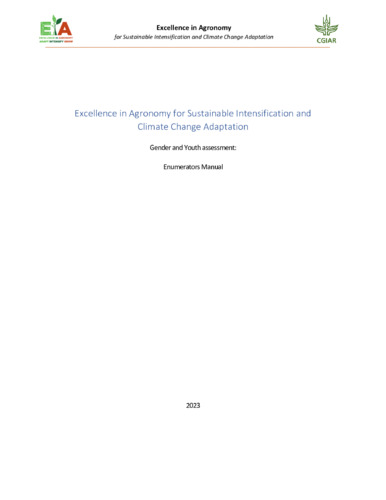Gender and Youth assessment: Enumerators Manual
Abstract
The Excellence in Agronomy (EiA) initiative aims to deliver agronomic gain for millions of smallholder farming households, with emphasis on women and young farmers for measurable impact on food and nutrition security, income, water use, soil health, and climate resilience. This objective will be achieved through:
• Facilitating the delivery of agronomic solutions, including co-creation and deployment of gender- and youth-responsive solutions to smallholder farmers via scaling partners.
• Enabling the creation of value from big data and advanced analytics, through the assembly and governance of data and tools; application of existing analytics and solutions for specific use cases; supply of information on climate impacts, inclusivity, and sustainability of agronomic solutions; and national agricultural research system (NARS) capacity strengthening.
• Driving the next generation of agronomy at scale innovations by addressing key knowledge gaps and facilitating innovation in agronomy research through engagement with partners.
• Nurturing internal efficiencies for an agile and demand-driven agronomy research and development community through internal organization and external partnerships for prioritization, demand mapping, and foresight.
A survey tool was developed by the EiA add-on teams for administering by Use Case teams within their place of work. The tool was developed to understand farmer segmentation, gender and generational differences in agricultural management practices and technology adoption, yield gap decomposition and key performance indicators of agronomic gains, and current practices in the Use Case population of interest. With this better understanding, along with an understanding of other contextual factors, Use Case teams will have the necessary information to inform the design of their Minimum Viable Products (MVPs) to ensure they meet the needs of women, men, youth, and different farmer types and help increase yields and other agronomic gain outcomes.

